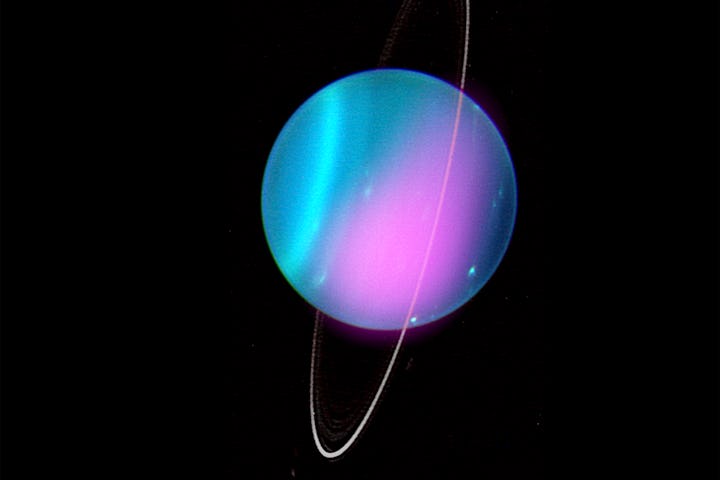Uranus Will Stun, Be Visible To The Naked Eye As It Reaches “Opposition”
Not only are we getting a total lunar eclipse in November, but Uranus will also be visible to the naked eye.

This November 2022 is set to be a really memorable one for families who love to watch the stars. Not only did we just get to view the last total lunar eclipse until 2025 in the wee hours of November 8th, but the Northern Taurids, a spectacular meteor shower, are set to peak soon, and Uranus will also be visible to the naked eye. The planet will be in opposition, and we’ve got everything you need to know to catch the cool show with your kids.
What does “Uranus in opposition” mean?
According to EarthSky, opposition “marks the middle of the best time of year to see an outer planet.” For Uranus, this happens once a year, typically from the middle of October to the end of November. When Uranus is in opposition, the planet is also the closest it comes to Earth. That gives us the best time to actually see it with the naked eye.
When is the best time to see Uranus?
The best date to see Uranus is November 9, according to EarthSky, and the best time to catch a glimpse is around midnight, when it will be close to the opposition.
Will seeing Uranus be as easy as looking at a total lunar eclipse?
Any sky event is a good one to involve the whole family. However, it’s important to note that viewing Uranus won’t be as easy as other sky events, like the Total Lunar Eclipse. Uranus isn’t very bright, even with perfect conditions of low light and clear skies.
According to TimeandDate, with the naked eye you’re likely to see a very faint blue dot representing Uranus. So if you have kids who get bored easily or aren’t fascinated with space, they may not find this one too exciting.
Do I need any special equipment?
You won’t need any special equipment to see the planet up in the sky, provided you have good eyesight and a clear sky. EarthSky does note that if you have a good telescope or binoculars, it will be easier to see the planet.
Uranus is a really cool planet: here are fun facts for the kids
If you want to make the viewing an educational one, too, here are some facts about Uranus, according to NASA:
- Uranus is really big! The planet is four times wider than Earth.
- Uranus has at least 27 moons in its orbit.
- “One year” for Uranus (how long it takes to complete an orbit around the sun) would be 84 years on Earth.
- The planet rotates on its side.
- The planet has 13 rings around it. The inner ones are dark, and the outer rings are brightly colored.
Up next? The Northern Taurids will peak, then comes December’s aptly named “Cold Moon” — stay tuned!